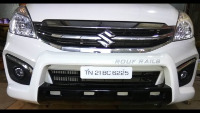Helmet and no helmet rider detection Computer Vision Project
Updated a year ago
2.9k
views153
downloadsMetrics
Project Overview:
Problem Statement: Addressing traffic accidents and fatalities by enforcing helmet regulations among motorcyclists.
Objective: Develop a deep learning-based system for helmet detection and tracking using YOLO algorithms.
Dataset Collection and Preparation:
Data Sources: Traffic images from open-source website pexels , Kaggle, and Roboflow.
Dataset Diversity and Quality Testing: Rigorous feasibility testing, evaluating completeness, balance, annotation quality, and data size.
Dataset Characteristics: Contains diverse scenarios with varying lighting conditions, perspectives, and backgrounds.
Annotation: Classified images into three categories: With Helmet, Without Helmet, and Licence Plate, ensuring precise object localization. These classes serve as the core labels for the object detection and tracking system, enabling the YOLO model to discern and identify these critical elements in traffic images.
Annotation Tool: Roboflow software used for processing and annotating images.
Contributers: Wasule S.V and Khadatkar G.W
Use This Trained Model
Try it in your browser, or deploy via our Hosted Inference API and other deployment methods.
Build Computer Vision Applications Faster with Supervision
Visualize and process your model results with our reusable computer vision tools.
Cite This Project
If you use this dataset in a research paper, please cite it using the following BibTeX:
@misc{
helmet-and-no-helmet-rider-detection_dataset,
title = { Helmet and no helmet rider detection Dataset },
type = { Open Source Dataset },
author = { GW Khadatkar and SV Wasule },
howpublished = { \url{ https://universe.roboflow.com/gw-khadatkar-and-sv-wasule/helmet-and-no-helmet-rider-detection } },
url = { https://universe.roboflow.com/gw-khadatkar-and-sv-wasule/helmet-and-no-helmet-rider-detection },
journal = { Roboflow Universe },
publisher = { Roboflow },
year = { 2024 },
month = { jan },
note = { visited on 2024-12-25 },
}






